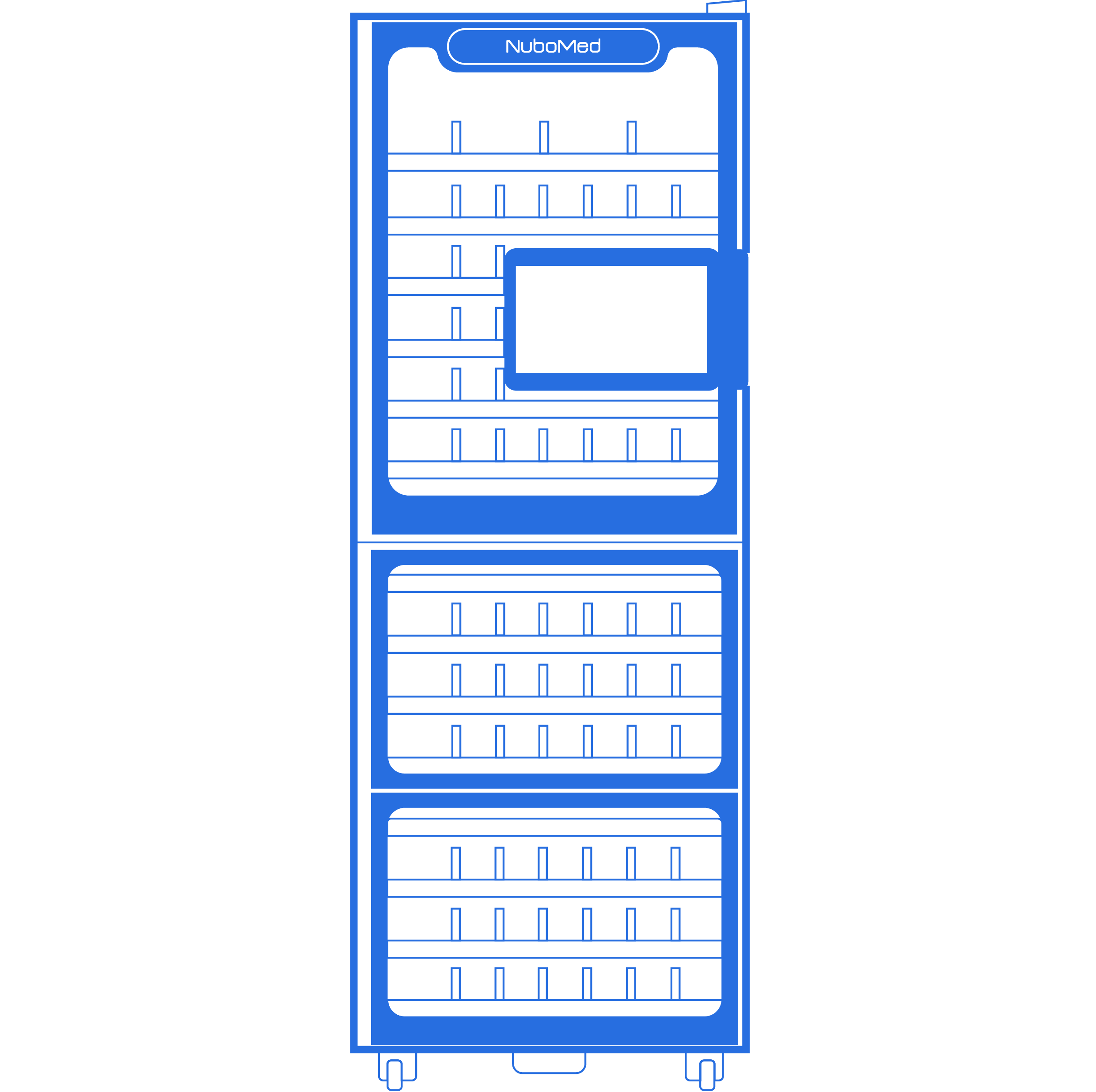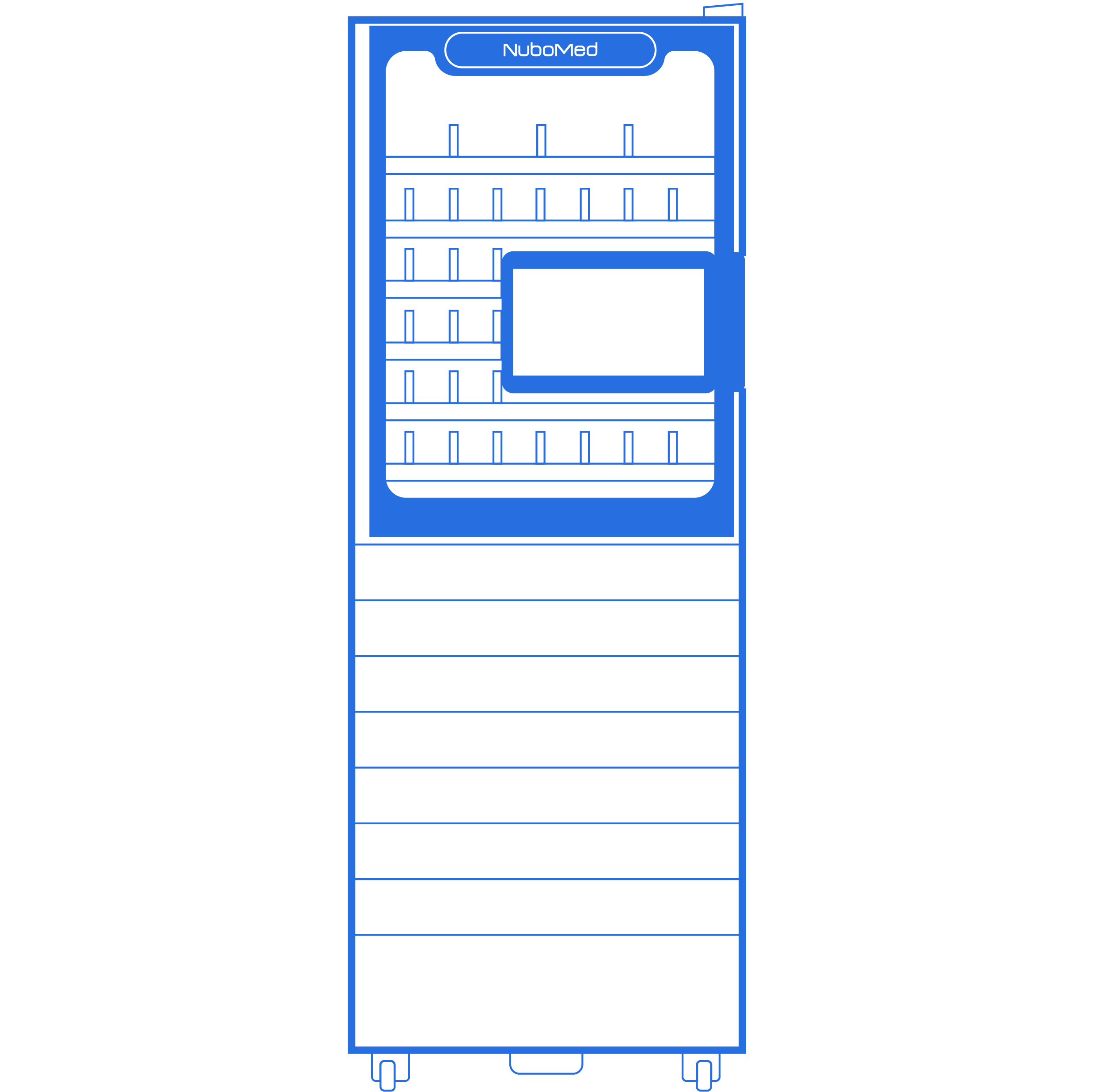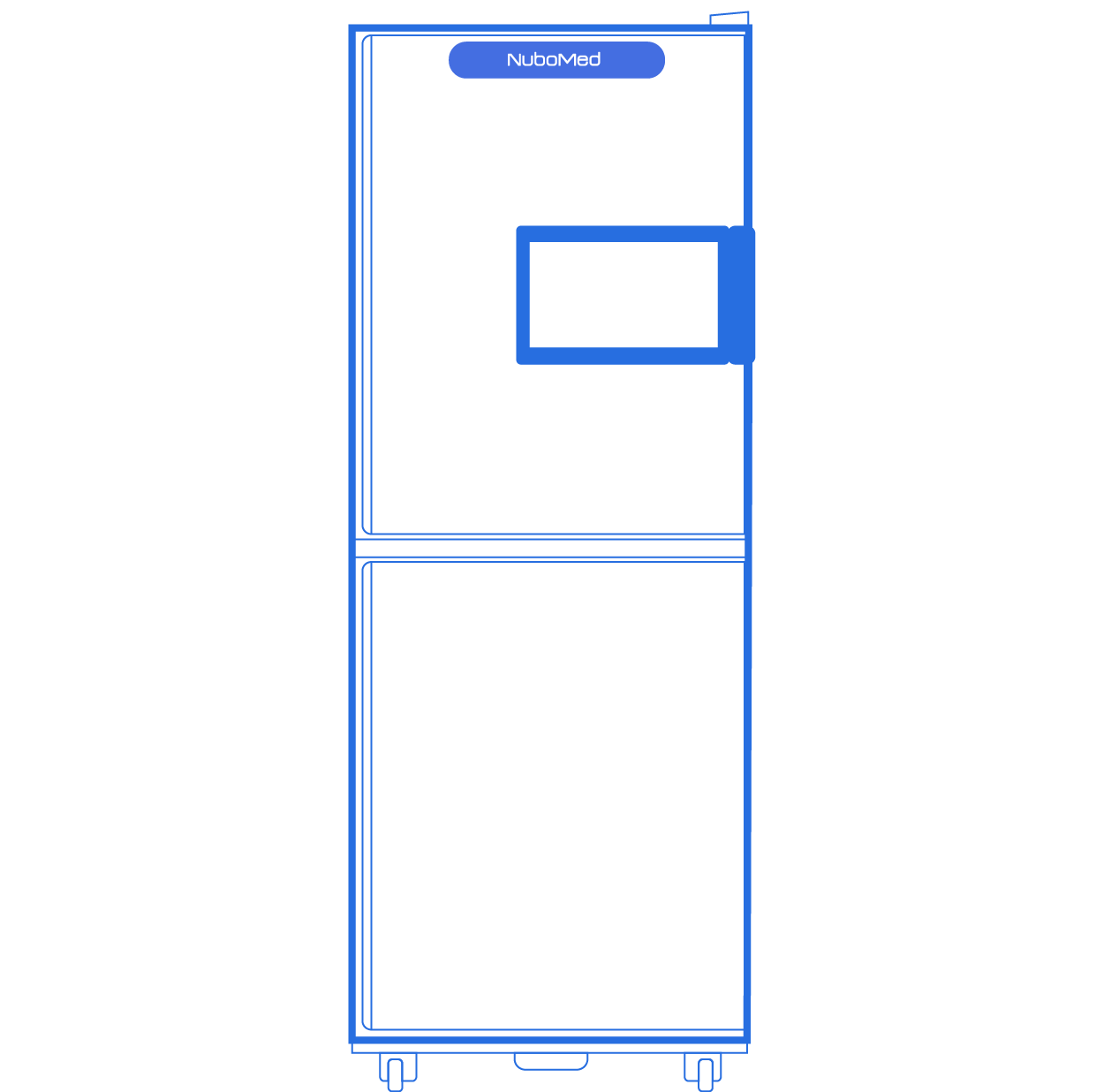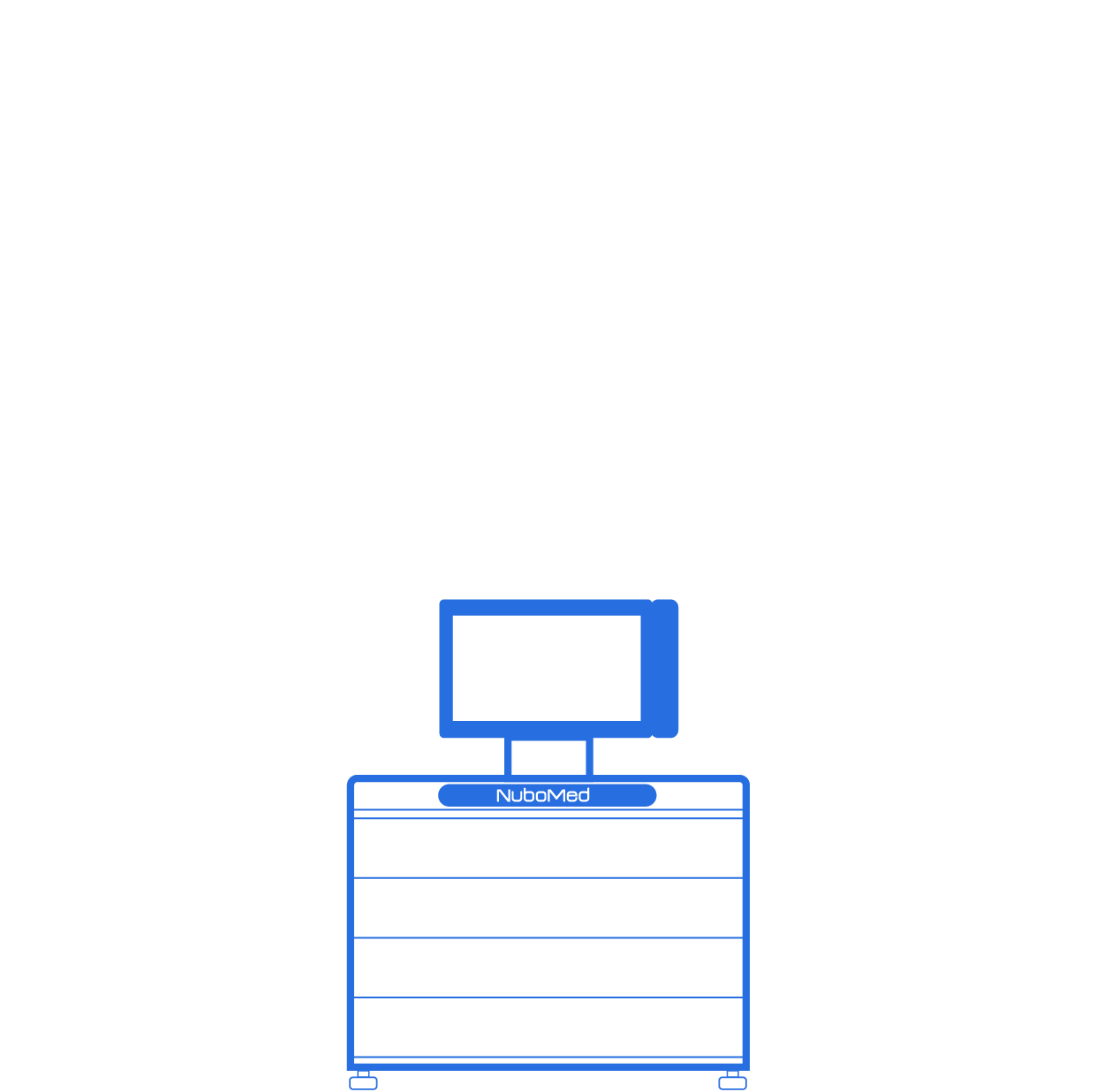- NuboMed
- Smart Hospital
- Overview
- Pharmacy
- Inpatient Ward
- Operating Room
- Products
- Intelligent Closed-loop Medication Management System
 Medication Management Cabinet
Medication Management Cabinet Medication Management Cabinet -Shelf
Medication Management Cabinet -Shelf Medication Management Cabinet-Glass Door
Medication Management Cabinet-Glass Door Medication Management Cabinet - Refrigerator
Medication Management Cabinet - Refrigerator Controlled Substance Management Cabinet
Controlled Substance Management Cabinet Medication Management Cabinet - Composite
Medication Management Cabinet - Composite Medication Management Cabinet - Safe
Medication Management Cabinet - Safe Countertop Medication Management Cabinet
Countertop Medication Management Cabinet
- Intelligent Closed-loop Medical Supply Management System
 Medical Supply Management Cabinet - RFID
Medical Supply Management Cabinet - RFID Medical Supply RFID Room
Medical Supply RFID Room
- Smart Medical Cart
 Medical Cart
Medical Cart Treatment Cart
Treatment Cart Nurse Cart
Nurse Cart Medicine Dispensing Cart
Medicine Dispensing Cart
- Case Studies
- About Us
- Company Intro
- Blog
- FAQ
- Home>
- About Us>
- Blog
Problems Associated with Automated Dispensing Cabinets and Strategies to Improve ADC Safety
ProductsADC
2022-07-23 15:13:49

Automated dispensing cabinets (ADCs) were introduced in hospitals in the 1980s to facilitate the transition to a more decentralized medication distribution system. Their benefits include secured access to medications, more efficient medication billing, inventory management and dispensing process, greater medication security, and potential reductions in medication errors.
While there are many benefits to using automated dispensing cabinets (ADCs), there are still some limitations, unsafe practices, and pitfalls associated with ADC use. The types of errors include medication errors, stocking/storage errors, and medications being administered to patients with documented allergies.
Contributing factors that may have led to these errors include:

1. Overuse of Overrides
According to the Guidelines for the Safe Use of Automated Dispensing Cabinets, ISMP defines “override” as a process of bypassing the pharmacist’s review of a medication order to obtain medication from the ADCs in urgent/emergent situations. According to the definition, it is clear understanding that an order for the medication override exists and overriding is to be used only in urgent situations when a delay in doing so would harm the patient.
While most healthcare organizations have established a list of medications that are available through ADCs override function. One of the biggest concerns about the safe use of ADCs is to prevent medication overrides in nonurgent settings. Practitioners can easily remove medications from the ADCs upon override and view the process as routine rather than a risky step. While organizations must identify the medications with the potential to be obtained emergently, along with examples of situations that might require the medications to be removed before a pharmacist’s review, there will many circumstances when there is enough time for the pharmacist to review even emergent medication orders prior to retrieving the medication from ADC.
Another safety concern is the review process. After override, there should be a review process for pharmacists or nurse managers to retrospectively review medictaions removed. In many organizations, the review and monitor process is often absent.
2. Remove Medications Without an Order
In rare situations, medications must be removed from ADCs without a verbal, telephone, written, or electronic order. This behavior can not be called “override”, because all true “override” begin with an order and end with a decision to bypass the pharmacist’s review before removing the medication from the ADCs.
Removal of a drug from ADCs without an order is dangerous. Yet, not only has a pharmacist not reviewed the safety and appropriateness of the medication for the patient, but the prescriber has not yet ordered the medication. Furthermore, practitioners may fail to recognize that this action likely falls outside of their scope of practice.
3. Remove an Ordered Medication from a Non-Profiled ADC
A profile ADC is one that requires practitioners to select a drug from a patient-specific list on the ADC screen and obtain the medication only after the order has been verified by the pharmacist. It is not recommended to use the non-profiled ADC which allows practitioner access to all medications stored within the ADC, typically bypassing the pharmacist’s review of the order prior to medication selection. This may also be referred to as an “override”. However, a pharmacist may never even be notified about the medication order, even retrospectively.

Safe Practice Recommendations:
Automated dispensing cabinets cannot improve patient safety unless cabinet design and use are carefully planned and implemented to eliminate opportunities for wrong drug selection and dosing errors. According to ISMP’s Guidelines for the Safe Use of Automated Dispensing Cabinets, core elements include:
1. Provide Ideal Environmental Conditions for the Safe Use of ADCs
2. Establish ADC System Security
3. Provide Profiled ADCs and Monitor System Overrides
4. Select and Maintain Appropriate ADC Configuration and Functionality
5. Select and Maintain Optimal ADC Inventory
6. Implement Safe ADC Stocking and Return Processes
7. Display Important Patient and Drug Information
8. Develop Procedures for Accurate ADC Withdrawal and Transfer to the Bedside for Administration
9. Provide Staff Education and Competency Validation
NuboMed has designed user-friendly automated dispensing cabinets that complies with the guidelines. For more information, please contact us.
Related Reading
We use cookies to give you the best online experience. By using the website you agree with ourcookie policy



